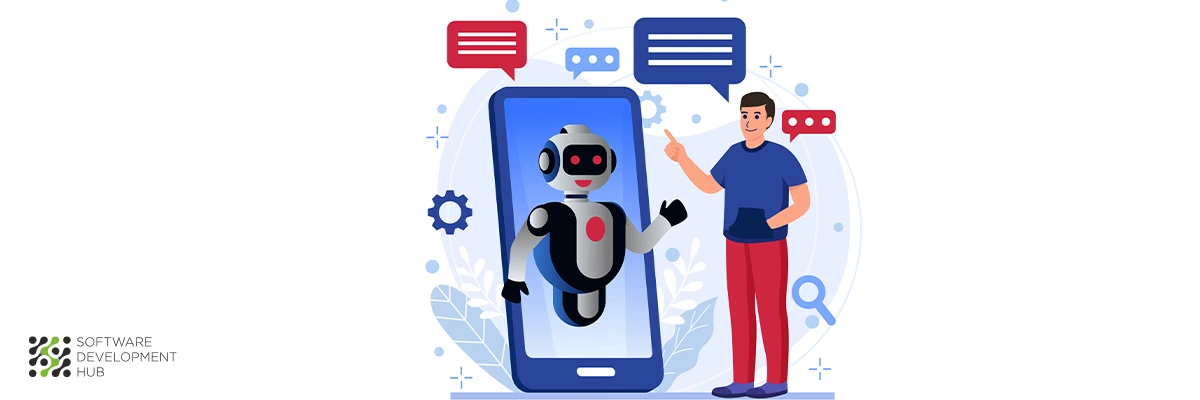AI in DevOps: A Practical Guide for Teams in 2025
Companies that integrate AI into their DevOps processes achieve better speed, accuracy, and reliability throughout development cycles. This integration is particularly evident in the continuous integration and continuous delivery (CI/CD) pipeline, which forms the backbone of modern DevOps practices.
DevOps AI has quickly shifted from an optional enhancement to an essential component of modern development practices. Today's AI tools can perform automatic code testing, anticipate system failures before they occur, and fine-tune deployment processes. Netflix exemplifies this approach, using AI-powered systems to identify and resolve potential issues before users experience them, which substantially decreases downtime and boosts service dependability.
This guide examines practical methods for implementing AI within your DevOps pipeline, with a focus on real-world applications that can boost team productivity. We'll cover strategies suitable for teams at different stages – whether you're taking your first steps with AI or seeking to enhance existing processes. The goal is to provide you with actionable insights for successfully integrating AI into your DevOps practices, including CI/CD pipeline automation and cloud-native DevOps approaches.
Assessing Your DevOps Pipeline for AI Integration
Before adding artificial intelligence to your DevOps processes, it's crucial to thoroughly analyze your current pipeline. A recent industry survey reveals that while 84% of companies acknowledge AI will significantly impact their business, merely 14% of organizations worldwide consider themselves fully prepared for AI integration. This striking disparity underscores why proper assessment must precede implementation, especially when considering the integration of AI into CI/CD pipelines.
Common DevOps bottlenecks AI can solve
Traditional DevOps pipelines encounter several recurring challenges that limit efficiency. Manual setup processes represent one of the most frustrating bottlenecks, not only consuming valuable time and resources but also introducing human error into critical processes. Similarly, managing complex dependencies across different environments often creates conflicts that delay deployments.
As applications grow in size and complexity, testing processes become increasingly difficult to manage, leading to delayed feedback loops and longer execution times. Poor resource allocation in scaling environments frequently causes performance problems that AI can help anticipate and mitigate. This is where CI testing and continuous integration tests can be significantly improved through AI-driven automation.
Other significant bottlenecks include:
- Manual misconfigurations resulting in unexpected system downtime
- Ineffective error detection leading to broken builds and troubled deployments
- Insufficient security verification requiring extensive manual review
These issues create what teams commonly refer to as "pipeline bottlenecks" despite the theoretical efficiency of CI/CD processes. Fortunately, AI-powered solutions can enhance automation by optimizing pipelines through analysis of historical build data, providing real-time observability insights, and automating resource management based on actual needs.
Evaluating your team's AI readiness
Assessing how prepared your team is for AI integration requires examining several key dimensions. First, evaluate data quality and accessibility—AI systems need not just any data, but good data. Information that is incomplete, inconsistent, or poorly structured will significantly impact AI model accuracy.
Next, conduct a thorough assessment of your technological infrastructure to determine if it can properly support AI initiatives. This includes evaluating hardware capabilities, software platforms, and network systems. Your infrastructure must handle the computational demands that AI requires and offer scalability for future growth, especially when considering cloud-native applications and microservices architectures.
Team skill assessment is another critical factor. Review your team's current expertise in relevant fields such as machine learning, data science, and software development. Identify any skill gaps that might require training programs or new personnel. This is particularly important when implementing advanced CI/CD tools and processes.
The cultural readiness of your organization also plays a significant role. DevOps teams that embrace automation, show openness to experimentation, maintain data-driven decision-making processes, and prioritize continuous learning will typically adapt more successfully to AI integration. This cultural shift is essential for adopting practices like GitOps and implementing infrastructure-as-code.
Identifying high-impact AI opportunities
After understanding existing bottlenecks and assessing team readiness, the next step is identifying where AI can deliver maximum value. Begin by analyzing your current processes and noting areas where staff members spend significant time on repetitive tasks.
Focus specifically on opportunities in these high-impact areas:
Code quality improvement: AI tools can automatically detect difficult-to-find bugs, critical issues, and security vulnerabilities with high precision, establishing a baseline for subsequent code reviews. This can be particularly effective when integrated with pull requests and code repositories.
Operational efficiency: AI systems can automatically identify and resolve operational issues, reducing Mean-Time-To-Recovery (MTTR) and improving application availability through ML-powered insights. This is crucial for maintaining the health of your CI/CD pipeline.
Performance optimization: Development and IT operation teams can implement AI-powered recommendations to address performance issues, potentially reducing operational costs by up to 50% for production applications. This is especially valuable in cloud-native DevOps environments.
Predictive analytics: Machine learning algorithms excel at forecasting potential system failures and performance bottlenecks by analyzing historical data patterns, enabling teams to address issues before they impact users. This capability can significantly enhance the CI/CD process and continuous deployment strategies.
After evaluating these opportunities, plot them according to effort, feasibility, and potential ROI to prioritize implementation. Remember that successful AI integration isn't about implementing technology everywhere—it's about strategic application where impact will be greatest.
Essential AI Tools for Modern DevOps Teams
The growing complexity of DevOps pipelines has transformed AI tools from optional enhancements to essential components for teams pursuing optimal efficiency. A detailed industry survey shows that predictive analytics can boost defect detection rates by up to 45%, clearly demonstrating how these tools directly impact both productivity and output quality. This section explores key AI-powered tools that can enhance various aspects of the CI/CD pipeline.
Code generation and review tools
AI-powered code assistants have fundamentally changed how developers approach code writing and review processes. GitHub Copilot emerges as a particularly effective solution, offering real-time suggestions for code snippets and complete functions across multiple programming languages without requiring specialized expertise. The tool integrates smoothly with widely-used IDEs such as Visual Studio Code, enhancing workflow efficiency while maintaining compatibility with established development practices.
AWS CodeGuru similarly transforms code quality assessment through two primary functions:
- Automated code reviews that pinpoint defects and security vulnerabilities
- Continuous monitoring that identifies performance bottlenecks and memory inefficiencies
However, context awareness remains a decisive factor in these tools' effectiveness. Recent technical analysis reveal notable gaps between marketing claims and actual performance metrics, underscoring the importance of selecting tools that understand your specific development ecosystem rather than isolated solutions.
Intelligent monitoring solutions
DevOps monitoring has progressed beyond basic metric tracking into a sophisticated, AI-driven discipline. Modern continuous monitoring tools use specialized software to provide enhanced visibility into application performance, security threats, and compliance issues.
Datadog employs machine learning to analyze metrics, logs, and traces, automatically correlating telemetry data and highlighting outliers across the technology stack. Similarly, Dynatrace's Davis AI processes billions of dependencies within milliseconds to detect anomalies and conduct root cause analysis. These capabilities help teams identify potential issues before they affect users, reducing Mean-Time-To-Detect (MTTD) of errors.
PagerDuty AIOps further assists engineering teams by reducing alert noise, enabling efficient triage, and eliminating manual work from incident response processes. Through these intelligent solutions, DevOps teams can achieve a clear, consolidated view that improves both their software delivery processes and final deliverables.
Implementing AI in Your CI/CD Pipeline
Incorporating AI into existing CI/CD pipelines changes the approach teams take toward software delivery. Research indicates that AI-enhanced pipelines can reduce deployment failures by up to 30%. For DevOps professionals, the question isn't whether to adopt AI but how to effectively implement it across different pipeline stages. This section explores key strategies for integrating AI into your CI/CD process.
Automating code quality checks with AI
Traditional static analysis tools typically lack context awareness and often generate numerous false positives. AI-powered code review tools, however, perform "context-aware" analysis, understanding the surrounding code environment and minimizing incorrect flags. This capability ensures developers receive more precise, actionable feedback.
AI-driven code quality tools have shown notable results:
- Detecting bugs 50% faster than conventional methods
- Identifying potential issues proactively before they become critical problems
- Automatically enforcing coding standards while decreasing manual review workload
These tools fit seamlessly into CI/CD workflows, offering continuous monitoring and immediate feedback during development. Solutions like DeepCode apply machine learning algorithms trained on millions of code repositories to find issues human reviewers might overlook. As a result, teams can identify critical problems earlier in the development cycle, enhancing the overall CI process.
AI-powered deployment strategies
Deployment remains one of the most critical yet risk-prone stages in the pipeline. AI enhances this stage through predictive capabilities and automated interventions, improving both continuous delivery and continuous deployment processes.
By applying machine learning models to historical data, teams can identify potential installation issues and minimize production risks. Tools such as Harness use AI to automatically roll back failed deployments without human intervention, while CircleCI employs AI technology to optimize CI/CD workflows through intelligent execution modeling.
When integrating Gemini or similar models into CI/CD pipelines, teams can generate automated code reviews and release notes, allowing developers to focus on more strategic work. These capabilities go beyond traditional static analysis, offering nuanced commentary and substantive recommendations for improving codebases.
The strategic implementation of AI across these pipeline stages creates a more intelligent DevOps workflow that continuously learns and improves, ultimately delivering higher quality software with increased velocity. This approach is particularly valuable for teams implementing cloud-native CI/CD and working with microservices architectures.
Measuring the Impact of AI in DevOps
Effective implementation of AI in DevOps requires solid measurement strategies to quantify actual benefits and justify ongoing investment. Forward-thinking organizations now use AI not just to improve performance but to redefine it by challenging established assumptions about what drives success in development pipelines. This section explores key performance indicators and ROI calculation methods for AI-enhanced DevOps practices.
Key performance indicators for AI-enhanced DevOps
The most effective approach combines traditional DevOps metrics with AI-specific indicators. DORA (DevOps Research and Assessment) metrics provide an excellent foundation, focusing on four critical measures: deployment frequency, lead time for changes, change failure rate, and mean time to recovery. These metrics function as continuous improvement tools, helping teams establish realistic goals based on their current performance levels.
AI elevates these traditional KPIs into more powerful and predictive metrics through:
- Predictive failure analysis and code quality assessment
- Risk factor identification and automated testing optimization
- Process bottleneck detection and resource allocation improvement
In essence, AI-powered KPIs deliver more intelligent, adaptive, and predictive insights than conventional performance indicators. Organizations utilizing AI-enabled KPIs are five times more likely to effectively align incentive structures with objectives compared to those using traditional metrics. This approach is particularly valuable for teams implementing CI/CD pipeline automation and cloud-native DevOps practices.
Overcoming Common AI Implementation Challenges
Adding AI into DevOps workflows introduces several obstacles that teams must address to realize the full potential of these technologies. Understanding these challenges from the outset helps organizations develop appropriate mitigation strategies for successful AI adoption, particularly in the context of CI/CD pipeline implementation.
Data quality and preparation issues
DevOps environments typically struggle with inconsistent and incomplete data, resulting in inaccurate predictions when this data feeds into AI models [6]. Unstructured operational data such as logs requires substantial preprocessing before becoming usable for AI algorithms. The dynamic nature of DevOps environments means datasets change rapidly, potentially becoming irrelevant without continuous monitoring. How reliable can an AI model be with poor-quality data? The answer is straightforward – data preparation represents a critical first step for any successful AI integration, especially in CI/CD processes.
Building AI skills within your team
Finding staff with expertise in both AI and DevOps presents a significant challenge given how relatively new both disciplines are. Development teams frequently lack specialized knowledge in machine learning algorithms, frameworks, and tools necessary for effective AI development. Similarly, AI specialists often have limited understanding of DevOps principles, which hampers cross-team collaboration. To address this skill gap, organizations can implement comprehensive training programs or establish strategic partnerships with industry experts. This is crucial for successfully implementing advanced CI/CD tools and processes.
Managing AI model drift
Model drift occurs when AI performance degrades over time due to changes in the underlying data. This phenomenon appears in two primary forms: data drift (changes in data distribution) and functional drift (changes in fundamental relationships among variables). To tackle this challenge effectively, teams can implement:
- Online learning mechanisms that update models as they process new data
- Scheduled model retraining when performance metrics fall below predefined thresholds
- Representative subsampling techniques with expert labeling
- Feature dropping for variables that cause drift
Early validation throughout the AI pipeline helps identify compliance and data quality issues before they develop into costly problems. In our experience working with healthcare IT systems, model drift represents one of the most underestimated challenges in maintaining AI-powered DevOps processes, particularly in continuous integration and continuous delivery pipelines.
Conclusion
AI integration into DevOps practices represents a significant shift in how teams approach software development and deployment. Throughout this guide, we've explored practical ways to enhance DevOps workflows through AI, from initial assessment to full implementation within CI/CD pipelines.
Success with AI in DevOps hinges primarily on careful planning and methodical execution. Teams must first evaluate their readiness, select suitable tools, and establish clear metrics for measuring impact. While obstacles like data quality issues and legacy system integration exist, proper preparation and strategic implementation can help teams overcome these challenges.
The future of DevOps clearly points toward AI-powered automation and intelligence. Organizations embracing this transformation now will secure substantial advantages in deployment speed, code quality, and operational efficiency. Our analysis indicates that teams implementing AI-driven DevOps solutions can expect marked improvements in development cycles and noticeable reductions in operational costs.
What separates successful AI adoption from failed attempts? In our experience working with healthcare IT systems, it's the recognition that implementing AI in DevOps isn't a one-time project but rather an ongoing journey of continuous improvement. We recommend starting small, measuring results methodically, and gradually expanding your AI implementation as your team builds experience and confidence with these technologies.
The SDLC landscape continues evolving, and today's forward-thinking DevOps practices will become tomorrow's industry standards. By taking measured steps toward AI integration now, your team positions itself ahead of this inevitable industry shift. This is particularly true for organizations implementing cloud-native DevOps practices, working with microservices architectures, and leveraging advanced CI/CD tools like Jenkins, Red Hat OpenShift, and Tekton.
As you embark on this journey, remember that the goal is not just to automate processes but to create a more intelligent, adaptive, and efficient software delivery pipeline. By embracing AI in your DevOps practices, you're not just keeping pace with the industry – you're setting the stage for innovation and competitive advantage in the years to come.
Categories
About the author
Share
Need a project estimate?
Drop us a line, and we provide you with a qualified consultation.








